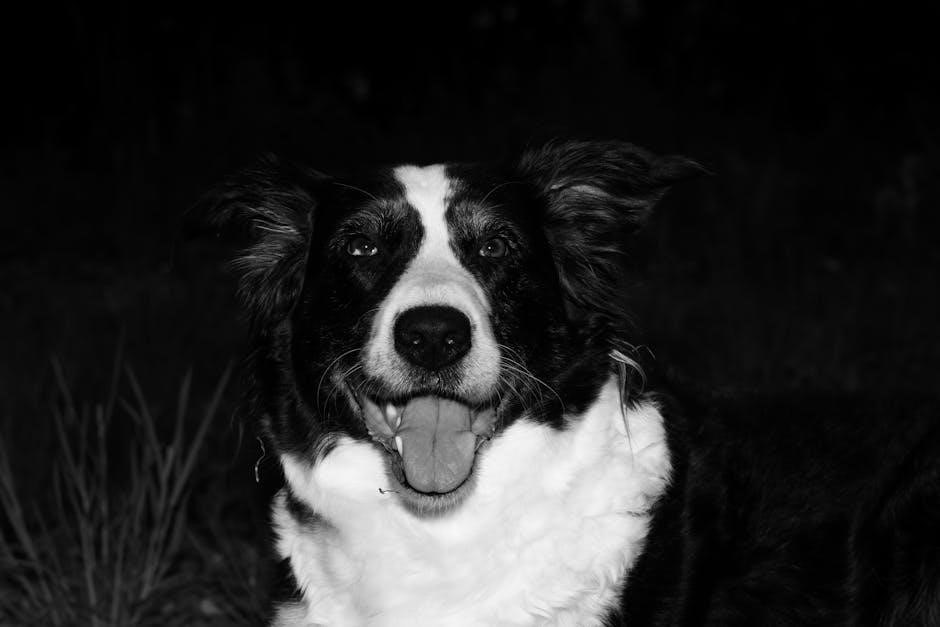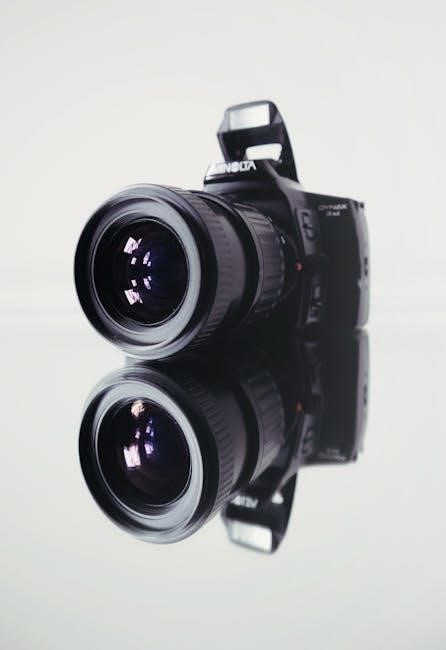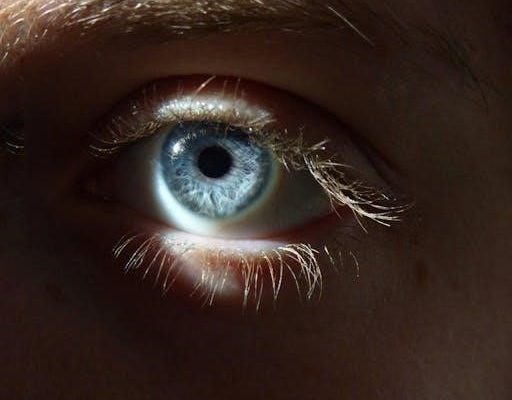Canon EOS R7 Manual: A Comprehensive Guide
The Canon EOS R7 is a powerhouse of speed, precision, and versatility. Mastering its complex settings and features can seem overwhelming. This comprehensive guide provides a clear path to harnessing this remarkable camera’s full potential, covering everything from basic operations to advanced settings.
The Canon EOS R7 is a mirrorless camera that houses a 32.5 MP APS-C CMOS sensor and DIGIC X Image Processor, delivering stunning images and high-speed 30 fps shooting. It is designed for both photography and videography, offering a blend of advanced features and user-friendly operation. This camera is known for its speed, precision, and versatility.
The EOS R7 is equipped with Sensor-shift 5-Axis Image Stabilization, correcting up to 7 stops of unwanted camera shake. It is perfect for users looking to improve their skills in various photography genres, including sports and wildlife. The intuitive design and customizable settings make it a great choice for both beginners and experienced photographers.
Whether you’re capturing fast-action shots or recording high-quality videos, the Canon EOS R7 provides the tools and performance needed to achieve professional results. This section provides an overview of its capabilities.
Package Contents and Initial Setup
Upon unboxing your Canon EOS R7, you should find several essential components. The standard package typically includes the EOS R7 camera body, a camera strap, a battery pack (LP-E6NH), a battery charger (LC-E6), and a lens (if purchased as a kit). Additionally, you’ll find an instruction manual providing basic camera instructions and warranty information.
The initial setup involves several key steps to prepare your camera for use. First, charge the battery using the provided charger. While charging, familiarize yourself with the camera’s buttons and dials. Once the battery is fully charged, insert it into the camera.
Next, attach a compatible lens, such as the RF-S 18-150mm if you have it. Turn on the camera and set the date and time. Insert an SD card to store your photos and videos. Finally, consider updating the firmware to the latest version for optimal performance.
Basic Operations: Holding the Camera and Shutter Button
Properly holding the Canon EOS R7 is crucial for capturing sharp images and stable videos. Grip the camera firmly with your right hand, ensuring your index finger rests comfortably on the shutter button. Use your left hand to support the lens, providing additional stability and allowing you to adjust the zoom or focus rings.
When taking a photo, gently press the shutter button halfway down to activate the autofocus system. The camera will then lock focus on your subject. Once the subject is in focus, press the shutter button fully to capture the image. Avoid jerky movements while pressing the shutter button to prevent blurring.
For video recording, use the dedicated video record button. Smooth camera movements are essential for professional-looking videos. Consider using a tripod or image-stabilized lens, such as the RF-S 18-150mm, to minimize camera shake. Practicing these basic techniques will significantly improve your photography and videography skills with the EOS R7.

Understanding the EOS R7 User Manual
The EOS R7 user manual is your essential guide to understanding every feature. It includes basic instructions and advanced settings, ensuring you unlock the camera’s full potential for optimal performance.
Instruction Manual Overview
The included instruction manual for the Canon EOS R7 provides the foundational knowledge needed to begin using your new camera. This manual covers basic operations, ensuring that even novice users can quickly become familiar with the camera’s primary functions. It guides you through initial setup, explaining how to properly insert the battery, attach lenses, and format memory cards.
Furthermore, the instruction manual introduces the key buttons and dials, detailing their functions and how they impact your photography. You’ll learn how to navigate the menu system, adjust basic settings like ISO and aperture, and capture your first images. This overview serves as an excellent starting point before diving into the more advanced features.
By following the instruction manual, you’ll build a solid understanding of the EOS R7’s core capabilities, setting you up for success as you explore more creative and technical aspects of photography. This comprehensive guide is your first step toward mastering the Canon EOS R7.
Advanced User Guide: Detailed Features and Settings
The Advanced User Guide for the Canon EOS R7 delves into the camera’s extensive capabilities, providing in-depth explanations of its detailed features and settings. This guide is designed for users who want to fully unlock the potential of their EOS R7 and explore its creative possibilities. It covers advanced topics such as custom functions, allowing you to personalize the camera’s behavior to suit your specific shooting style.
Detailed explanations of the autofocus system, including its various modes and tracking capabilities, are provided. You’ll also learn how to fine-tune image quality settings, such as white balance and picture styles, to achieve the desired look for your photos. The guide offers comprehensive instructions on using the camera’s built-in wireless features for image transfer and remote control.
By mastering the information presented in the Advanced User Guide, you’ll gain complete control over your Canon EOS R7, enabling you to capture stunning images in any situation. This guide is your key to unlocking the full power of your camera.
Accessing the Latest Advanced User Guide Online
To ensure you have the most up-to-date information on your Canon EOS R7, accessing the latest Advanced User Guide online is crucial. Canon regularly updates the guide to reflect firmware updates and new features. The online version provides the most current instructions and troubleshooting tips.
The primary source for the latest Advanced User Guide is the official Canon website. Navigate to the support section for the EOS R7 and look for the “Manuals” or “Downloads” area. Here, you’ll find the most recent version of the Advanced User Guide available for download in PDF format.
Additionally, Canon often provides supplemental information and updates on its support pages, so it’s worth checking these resources regularly. Some third-party websites and forums may also host the Advanced User Guide, but it’s always best to obtain it directly from Canon to ensure accuracy and avoid potential malware. By accessing the guide online, you’ll stay informed about the latest features and improvements to your EOS R7.

Key Features and Settings Explained
Understanding the key features and settings of the Canon EOS R7 is vital for optimizing its performance. This section dives into critical aspects such as the image sensor, shooting modes, and AF/Drive settings for enhanced control.
Image Sensor and Image Processor
The Canon EOS R7 boasts a 32.5 MP APS-C CMOS sensor paired with the DIGIC X Image Processor, delivering stunning images and high-speed performance. This combination enables rapid 30 fps shooting, ideal for capturing sports and wildlife. The APS-C sensor provides a cropped field of view, extending the reach of lenses.
The DIGIC X processor ensures exceptional image quality, reduced noise, and enhanced processing speeds. It handles complex tasks such as image stabilization and autofocus calculations with ease. The image sensor-processor synergy allows for impressive dynamic range and color accuracy.
Together, the sensor and processor empower the EOS R7 to capture detailed, vibrant images in various shooting conditions. They contribute to the camera’s overall responsiveness and ability to handle demanding photographic situations, making it a versatile tool for both photographers and videographers seeking high-quality results.

Shooting Modes: Basic Zone and Creative Zone
The Canon EOS R7 offers a diverse range of shooting modes, categorized into Basic Zone and Creative Zone. Basic Zone modes, such as Scene Intelligent Auto, simplify photography by automatically adjusting settings for optimal results. These modes are perfect for beginners or those seeking hassle-free shooting in various scenarios.
Creative Zone modes provide manual control over aperture, shutter speed, and ISO. These modes include Program (P), Aperture Priority (Av), Shutter Priority (Tv), and Manual (M), allowing experienced users to fine-tune settings to achieve their desired creative vision. These modes unlock the full potential of the camera.
Understanding the differences between these zones is crucial for mastering the EOS R7. Whether you prefer the ease of automatic settings or the precision of manual control, the R7 offers shooting modes to suit every skill level and photographic style, ensuring you capture the perfect shot every time.
AF/Drive Settings
The Canon EOS R7 boasts advanced autofocus (AF) and drive settings, crucial for capturing sharp images of both still and moving subjects. The AF system includes various modes, such as One-Shot AF for stationary subjects and Servo AF for continuous tracking of moving subjects. Zone AF allows you to select a specific area of the frame.
Drive settings determine the number of frames captured per second. The EOS R7 offers high-speed continuous shooting, ideal for sports and wildlife photography. Customizing these settings allows you to prioritize focus accuracy or shooting speed, adapting to different shooting situations.
Understanding these AF/Drive settings is essential for maximizing the EOS R7’s performance. Whether you’re shooting portraits, landscapes, or action shots, mastering these settings will help you achieve consistently sharp and well-timed images. You can even adjust AF speed.
Playback Options
The Canon EOS R7 offers a range of playback options for reviewing and managing your captured images and videos directly on the camera. You can quickly scroll through your photos, zoom in to check focus and detail, and view shooting information such as aperture, shutter speed, and ISO.
The playback menu provides options for deleting unwanted images, protecting important ones, and rating your photos for easier organization later. You can also view images as a slideshow or browse them using the index display. The EOS R7 allows you to edit images in-camera.
Additionally, you can connect the camera to a TV or monitor via HDMI to view your photos and videos on a larger screen. Understanding and utilizing these playback options enhances your post-shooting workflow, allowing you to efficiently manage and showcase your work. It is important to rate your photos!

Connectivity and Software

The Canon EOS R7 offers various connectivity options such as Wi-Fi and Bluetooth. This allows wireless image transfer and remote camera control. Canon also provides software for editing and managing your photos.
Wireless Features

The Canon EOS R7 boasts robust wireless capabilities, enhancing your workflow through seamless connectivity. Integrated Wi-Fi allows for effortless image and video transfer to smartphones, tablets, and computers, streamlining your sharing and backup processes. Bluetooth provides a constant, low-energy connection for remote camera control and geotagging.
Using the Canon Camera Connect app, you can remotely adjust settings, trigger the shutter, and review images, offering creative flexibility and convenience. The app also simplifies sharing your photos and videos directly to social media platforms. Furthermore, wireless printing to compatible Canon printers is supported, enabling instant, high-quality prints.
Setting up and managing these wireless connections is straightforward, with intuitive menus and clear instructions within the camera’s interface and the Canon Camera Connect application, ensuring a smooth user experience.
Canon Driver Downloads and Software
To unlock the full potential of your Canon EOS R7, it’s essential to install the necessary drivers and software. Canon provides a suite of applications designed to enhance your photography workflow, from image editing to camera control. Regularly updating these drivers and software ensures optimal performance and compatibility with your computer and operating system.
Canon’s website offers a dedicated support section where you can find the latest drivers, software, and firmware updates for your EOS R7. These downloads include utilities for transferring images, processing RAW files, and remotely controlling your camera from your computer.
Installing the correct drivers and software is crucial for seamless communication between your camera and computer, enabling you to efficiently manage, edit, and share your photos and videos. Always refer to Canon’s official website for the most up-to-date and secure downloads.
Software Instruction Manuals
Canon provides comprehensive software instruction manuals to guide users through the functionalities of its various software applications designed for the EOS R7. These manuals offer detailed explanations of each feature, step-by-step instructions, and troubleshooting tips to help you maximize your software experience.
The software instruction manuals cover topics such as image editing, RAW processing, camera control, and file management. They are typically available in PDF format and can be downloaded from Canon’s official website. These manuals serve as valuable resources for both beginners and experienced users, providing insights into the software’s capabilities and how to effectively utilize them.
By consulting the software instruction manuals, you can gain a deeper understanding of the software’s functionalities and learn how to optimize your workflow for achieving professional-quality results with your Canon EOS R7 images and videos. These manuals are essential for unlocking the full potential of Canon’s software suite.

Troubleshooting and Support
Find support for your Canon EOS R7 with recommended resources. Access drivers, downloads, and manuals to ensure your product has up-to-date software. Access online technical support resources and troubleshooting for any issues.
Firmware Updates
Keeping your Canon EOS R7 firmware updated is crucial for optimal performance and access to the latest features. Canon regularly releases firmware updates to address bugs, improve functionality, and enhance compatibility with new lenses and accessories. These updates can significantly impact the camera’s overall performance, including autofocus speed, image quality, and video capabilities.
To ensure your EOS R7 is running the latest firmware, regularly check the Canon support website for available updates. The update process typically involves downloading the firmware file to an SD card, inserting the card into the camera, and following the on-screen instructions to install the update.
Before initiating a firmware update, it’s essential to back up your camera settings and ensure the battery is fully charged to prevent interruptions during the installation process. Carefully read and follow the instructions provided by Canon to avoid potential issues. Staying current with firmware updates will help you unlock the full potential of your EOS R7.
FAQs and Help Resources
Navigating a new camera system can be challenging, and the Canon EOS R7 is no exception. Fortunately, there are numerous FAQs and help resources available to assist users in understanding and troubleshooting their cameras. Canon’s website is a primary source of information, offering a comprehensive collection of FAQs, articles, and tutorials covering various aspects of the EOS R7.
These resources address common questions about camera settings, shooting modes, connectivity, and troubleshooting. In addition to Canon’s official resources, online forums and communities dedicated to Canon photography can provide valuable insights and solutions from experienced users. These platforms allow users to share their knowledge, ask questions, and receive guidance from fellow photographers.
Furthermore, video tutorials on platforms like YouTube offer visual demonstrations of camera features and techniques. By utilizing these FAQs and help resources, users can quickly resolve issues, expand their knowledge, and enhance their overall experience with the Canon EOS R7.
Error Codes and Solutions
Like all sophisticated electronic devices, the Canon EOS R7 may occasionally display error codes, indicating a problem that requires attention. Understanding these error codes and their corresponding solutions is crucial for maintaining the camera’s functionality and minimizing downtime. The camera’s instruction manual provides a list of common error codes and recommended actions.
These error codes can range from simple issues, such as a memory card error or low battery, to more complex problems involving the camera’s internal components. When an error code appears, it is essential to consult the manual or Canon’s online support resources to identify the cause and potential solutions.
In some cases, the solution may be as simple as replacing the battery, reformatting the memory card, or updating the camera’s firmware. However, more severe errors may require professional repair. By familiarizing yourself with the error codes and solutions, you can quickly address minor issues and determine when it is necessary to seek professional assistance.

Accessories and Lenses
To expand the functionality of the Canon EOS R7, a range of accessories and lenses are available. These enhance the shooting experience and unlock creative possibilities for photographers and videographers alike.

Compatible Accessories
The Canon EOS R7 is compatible with a wide array of accessories that enhance its functionality and versatility. These include external flashes like the Canon Speedlite series, which provide additional lighting options for various shooting scenarios. Microphones, such as the Canon directional stereo microphone DM-E1, can significantly improve audio quality for video recording.
Remote controls, like the Canon remote switch RS-60E3, allow for hands-free operation, ideal for long exposures and wildlife photography. Battery grips, such as the BG-R10, can extend battery life and provide a more comfortable grip, especially during extended shooting sessions.
Additionally, various straps, bags, and protective cases are available to ensure the camera’s safety and portability. These accessories cater to different needs, from professional studio work to on-the-go photography, making the EOS R7 a highly adaptable tool for any creative endeavor.
RF-S 18-150mm Lens Compatibility and Usage
The Canon RF-S 18-150mm f/3.5-6.3 IS STM lens is a versatile superzoom option designed specifically for APS-C cameras like the Canon EOS R7. Its compact and lightweight design makes it an ideal travel companion, offering a broad focal length range suitable for various shooting situations.
The lens’s image stabilization (IS) helps to reduce camera shake, resulting in sharper images, especially in low-light conditions or when shooting handheld. The STM (stepping motor) provides smooth and quiet autofocus, which is beneficial for both stills and video recording.
When using this lens with the EOS R7, users can take advantage of the camera’s advanced features, such as its high-speed shooting and subject tracking capabilities. The 18-150mm focal range allows for capturing wide-angle landscapes, portraits with pleasing background blur, and distant subjects with reasonable clarity.



